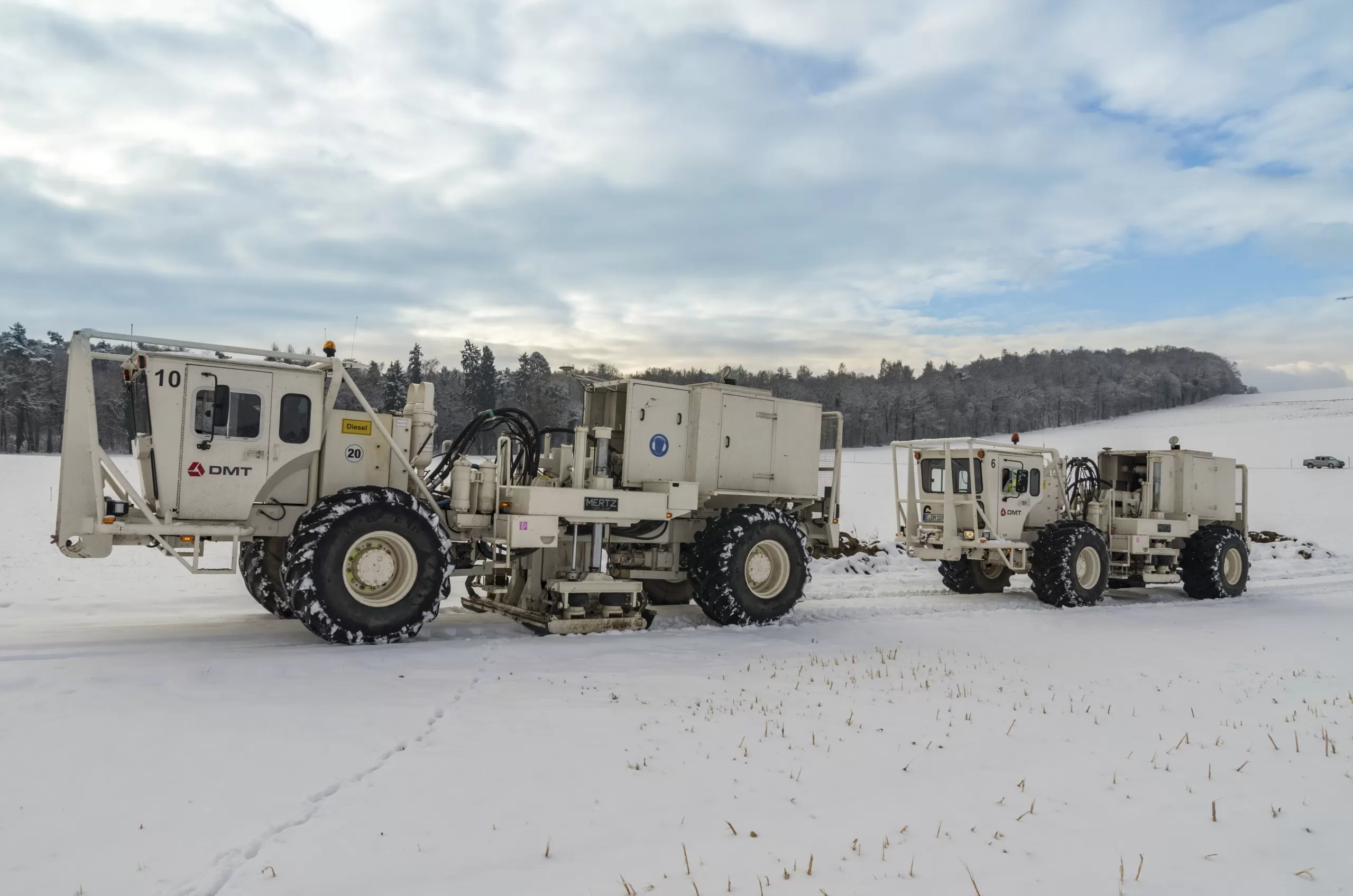
Large-scale 3D seismic campaign complete
An average of 130 workers from the survey crew of the company DMT spent a total of 191 days in the field. They laid cables, generated seismic waves and used vehicles to check that all the measurement lines were in order. Nagra’s 3D seismic campaign was completed successfully on Friday 3rd February.
“With more than 51,000 measurement points, this was the most extensive 3D seismic campaign ever carried out in Switzerland”, says Tim Vietor, a member of Nagra’s Executive Board. It will probably also be the last 3D seismic survey carried out by Nagra (National Cooperative for the Disposal of Radioactive Waste) as the underground environment in the potential siting regions has now been investigated in depth using the seismic method. The aim of the measurements is to build up a three-dimensional image of the underground that allows reliable statements to be made about the geology and hence the long-term safety of a deep geological repository for radioactive waste. The new findings provide information on the spatial conditions underground, allowing the repository layout to be optimised.
The 3D seismic campaign began in the Jura Ost region in October 2015 and was completed on Friday (3rd February) in Nördlich Lägern. The campaign extended over an area of around 200 km2 (Jura Ost: 92.6 km2, Zürich Nordost: 18.3 km2 and Nördlich Lägern: 91.6 km2) and covered 53 communities (JO: 27, ZNO: 9 and NL: 17). 3,999 landowners (JO: 1,624, ZNO: 565 and NL: 1,810) were informed in advance about the survey. Of these, 3,907 agreed to either cables being laid on their land or source points being positioned for the measurements (JO: 1,609, ZNO: 548 and NL: 1,750).
The measurements were carried out over 191 days (JO: 97, ZNO: 17 and NL: 77). The members of the survey crew covered a total of 1.1 million kilometres using 60 vehicles, corresponding to 27.7 circumnavigations of the earth (JO: 410,000 km, ZNO: 100,000 km and NL: 600,000). Seismic waves were propagated into the underground rock formations at 40,779 source points (JO: 19,724, ZNO: 3,726 and NL: 17,329) and registered at 51,109 measurement points (JO: 25,742, ZNO: 5,109 and NL: 20,258).
“98% of all the landowners we approached agreed to the work”, says Vietor. This is a more than satisfactory result. “Many thanks to all those who made the measurements possible.” Besides the Cantons, communities and responsible authorities, particular thanks go to the inhabitants of the regions. It goes without saying that the additional traffic caused by the survey crew vehicles in the regions was sometimes found to be disruptive. This is all the more reason to appreciate the support of the affected public. “There was no intentional damage or vandalism.” Major accidents were also avoided, which is not a matter of course in such extensive field campaigns. Clean-up work and demobilisation of the survey crew are now underway. Vietor underlines the need for the seismic investigations: “The measurements are important as they help us to make safety-oriented decisions in the site selection process.”
Bild: Wolfgang Kessler
According to Swiss nuclear energy legislation, the producers of radioactive waste are responsible for its safe management and disposal. In 1972, the nuclear power plant operators and the Federal Government set up the National Cooperative for the Disposal of Radioactive Waste (Nagra) to perform this task. Nagra, which has its headquarters in Wettingen (AG), is the national technical competence centre in the field of deep geological disposal of radioactive waste.
Out of a strong sense of responsibility for the long-term protection of man and the environment, 110 employees are involved daily in performing this important work. The high level of competence is secured by targeted research programmes in two Swiss underground rock laboratories and intensive international collaboration.